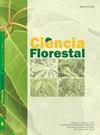Breakeven price of CO2 credits driving farmers to use the area to plant forest instead of grain
IF 0.5
4区 农林科学
Q4 FORESTRY
引用次数: 0
Abstract
Afforestation and reforestation were the challenges the farmer can seize to plant a culture that can capture more carbon than the amount emitted for cultivation. Assuming that the land was legally rented and owned, and part of an area that had not been obtained through recent deforestation, the main questions were: “why a farmer should have preferred to reserve the area to plant trees?”; and “How much did one ton of Carbon Dioxide [CO2] have to be rewarded to buy this opportunity?” This work had the target to estimate which was the minimum price for carbon credit so that the farmer will plant a forest instead of using the soil for grain cultivation. Based on the analysis that economic aspects and profit were the main drivers considered by the farmer to decide how to use the soil in case the area was not classified as Legal Reserve or Permanent Protection Area, seeking the usage which maximized the value per hectare. Considering a eucalyptus commercial forest planted under the premises of the current study, results showed that a price of around 24 BRL per ton of CO2 in 2021 is enough to turn it economically feasible. Business case had been estimated with and without profit coming from the commercial use of forest, and even assuming that no wood is cut and sold, the 2021 price of 40,48 BRL per ton of CO2 can ensure more profit than grain production over 14 years timeframe, allowing the farmer to make money beyond the usual commercial use of a forest.二氧化碳信用额度的盈亏平衡价格促使农民利用该地区种植森林而不是粮食
造林和再造林是农民可以抓住的挑战,以种植一种可以捕获比种植排放更多碳的文化。假设这片土地是合法租用和拥有的,而且是一部分不是通过最近的森林砍伐而获得的,那么主要的问题是:“为什么农民会倾向于保留这片土地来种树?”以及“一吨二氧化碳(CO2)要得到多少奖励才能买到这个机会?”这项工作的目标是估计碳信用的最低价格,以便农民种植森林,而不是将土壤用于粮食种植。在未被划为法定保护区或永久保护区的情况下,经济和利润是农民决定如何利用土壤的主要驱动因素,寻求每公顷价值最大化的利用方式。考虑到在当前研究的前提下种植的桉树商业林,结果表明,到2021年,每吨二氧化碳的价格约为24巴西雷亚尔,就足以使其在经济上可行。商业案例已经进行了评估,无论是否从森林的商业用途中获得利润,即使假设没有木材被砍伐和出售,2021年每吨二氧化碳40,48巴西雷亚尔的价格可以确保在14年的时间框架内比粮食生产更多的利润,使农民能够在森林的通常商业用途之外赚钱。
本文章由计算机程序翻译,如有差异,请以英文原文为准。
求助全文
约1分钟内获得全文
求助全文
来源期刊

Ciencia Florestal
农林科学-林学
CiteScore
0.80
自引率
0.00%
发文量
85
审稿时长
18-36 weeks
期刊介绍:
The journal Forest Science was established in 1991 with the goal of being a vehicle for dissemination which are published works tércnico-scientific forest-related, the following bodies crowded the Centro de Ciências Rurais of Universidade Federal de Santa Maria:
- Centro de Pesquisas Florestais - CEPEF
- Programa de Pós-graduação em Engenharia Florestal - PPGEF
- Departamento de Ciências Florestais - DCFL
MISSION:
Publish scientific papers, technical notes, and literature reviews related to the area of forest sciences.
 求助内容:
求助内容: 应助结果提醒方式:
应助结果提醒方式:


